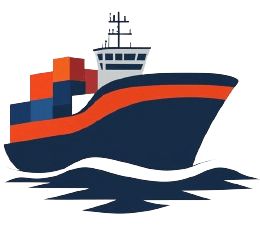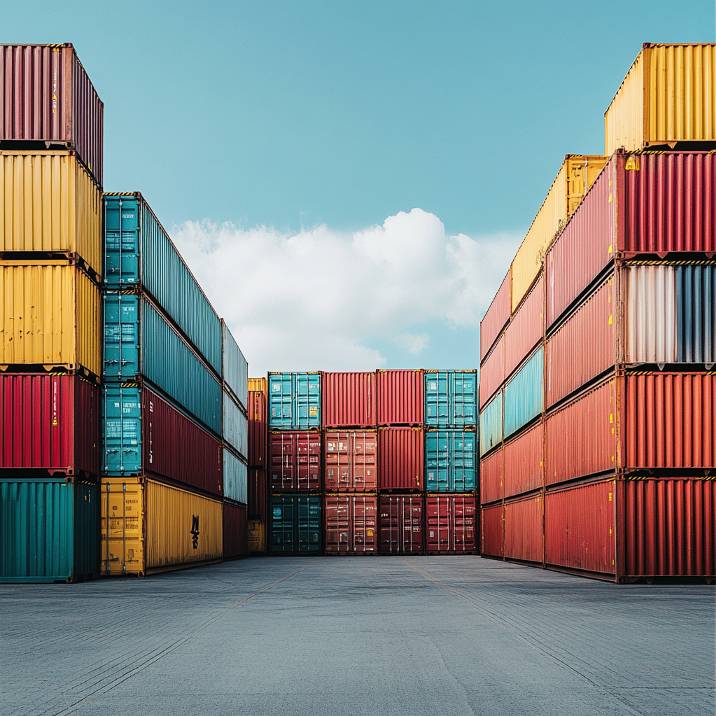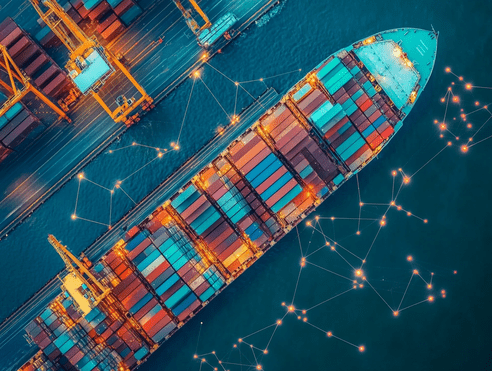Freight Forwarders vs. NVOCCs (Non-Vessel Operating Common Carriers)
| Criteria | Freight Forwarders | NVOCCs (Non-Vessel Operating Common Carriers) |
|---|---|---|
| Definition | Acts as an intermediary between shippers and carriers, managing various modes of transport (air, sea, road) to move goods across borders. | Operates similarly to a carrier but without owning vessels. Books space on shipping lines and issues own House Bill of Lading (HBL). |
| Legal Status | Typically classified as agents. Does not have the legal status of a carrier and does not issue a Bill of Lading as a carrier. | Legally classified as carriers without owning ships. Authorized to issue House Bill of Lading, recognized under maritime laws. |
| Service Scope | Offers multimodal services (air, sea, rail, road) including customs clearance, warehousing, and supply chain management. | Primarily focuses on ocean freight, containerized cargo, and provides carrier-like operations without vessel ownership. |
| Operational Risk Management | Limited liability. Liability is capped at a specific amount unless explicitly agreed upon otherwise. | Liability similar to that of a vessel-operating carrier. Assumes more risk compared to a freight forwarder due to issuing House Bills of Lading. |
| Contractual Relationships | Contracts with various carriers, warehouses, and customs brokers to create a seamless logistics service. | Enters into service contracts with vessel-operating carriers and offers these services to shippers at negotiated rates. |
| Documentation Issuance | Issues Freight Forwarder’s Cargo Receipt (FCR) or Shipper’s Letter of Instructions (SLI) for documentation purposes. | Issues House Bill of Lading (HBL), a legal document reflecting its status as a carrier and shipper. |
| Tariff and Pricing Strategy | Charges based on negotiated terms with multiple carriers. Profit margins can be thin and depend on service optimization. | Sets own tariffs and rates, often leading to more stable pricing control. Can profit from the difference between negotiated and offered rates. |
| Market Entry Barriers | Low entry barriers, as freight forwarders typically require less capital investment and regulatory compliance. | Higher entry barriers due to the need for regulatory compliance, licensing (e.g., FMC for US-bound shipments), and financial bonding. |
| Regulatory Compliance | Subject to various national and international regulations but less stringent compared to NVOCCs. | Must adhere to strict international maritime regulations, including registration with the Federal Maritime Commission (FMC) in the US. |
| Flexibility in Service Offering | Offers more flexible and customized services, easily adaptable to customer needs and supply chain changes. | Limited flexibility due to its structured carrier-like operations but offers consistency in shipping schedules and capacity. |
| Contractual vs. Operational Control | Manages and coordinates with carriers but lacks direct operational control. | More operational control over the cargo movement and booking slots due to carrier-like contracts. |
| Container Handling and Equipment | Does not own or operate container equipment but coordinates container availability through carriers. | Can lease, own, or operate containers, providing greater control over container availability and maintenance. |
| Role in Supply Chain Visibility | Enhances supply chain visibility by coordinating data flow from multiple carriers and service providers. | Provides detailed container tracking and movement updates due to direct relationships with ocean carriers. |
| Technology Adoption | Invests in technology for tracking, documentation, and shipment management systems, but typically relies on third-party integrations. | Often has direct EDI integration with carriers and ports, enabling faster and more accurate data exchange and tracking. |
| Service Differentiation | Competes on service quality, cost-effectiveness, and additional value-added services (e.g., customs brokerage, consulting). | Differentiates through carrier-like service offerings, issuing Bills of Lading, and controlling shipping schedules and space allocations. |
| Risk of Financial Loss | Low to moderate risk, primarily based on service errors or delays. Liability is minimized through legal limitations. | Higher risk due to potential liabilities associated with being recognized as a carrier, particularly in cases of cargo loss, damage, or delays. |
| Competitive Positioning | Competes with other freight forwarders and 3PLs. Faces competition from digital platforms and logistics integrators. | Competes with vessel-operating carriers and other NVOCCs. Has a stronger competitive edge in securing space during high demand periods. |
| Strategic Importance in Supply Chain | Plays a critical role in complex supply chains with diverse transportation modes and multimodal optimization. | Provides stability and capacity assurance in ocean freight logistics, particularly for small to medium shippers. |
| Future Trends and Challenges | Increasing pressure to adopt digital technologies, comply with regulatory changes (e.g., IMO 2020), and offer value-added services. | Facing challenges in maintaining profitability due to fluctuating freight rates, regulatory costs, and competitive pressures from freight forwarders and digital freight platforms. |
| Sustainability Initiatives | Often partners with sustainable carriers or logistics providers. Can promote sustainability through route optimization and consolidation. | Has more direct control over containerized cargo movements and can implement green shipping practices, though limited by vessel owners’ sustainability commitments. |
| Industry Outlook and Evolution | Likely to evolve into digital freight forwarders or integrated logistics providers leveraging technology and data analytics. | Expected to consolidate further, with larger NVOCCs gaining market share. May also partner more closely with vessel operators to provide end-to-end services. |
Conclusion:
Freight Forwarders and NVOCCs both play pivotal roles in global trade and logistics, with Freight Forwarders focusing on comprehensive logistics management and NVOCCs operating in a quasi-carrier role. The choice between these entities depends on the specific needs of shippers, desired control over the shipment, and regulatory considerations. As global supply chains become more complex, these roles may continue to converge, with technology driving innovation and efficiency in service offerings.



